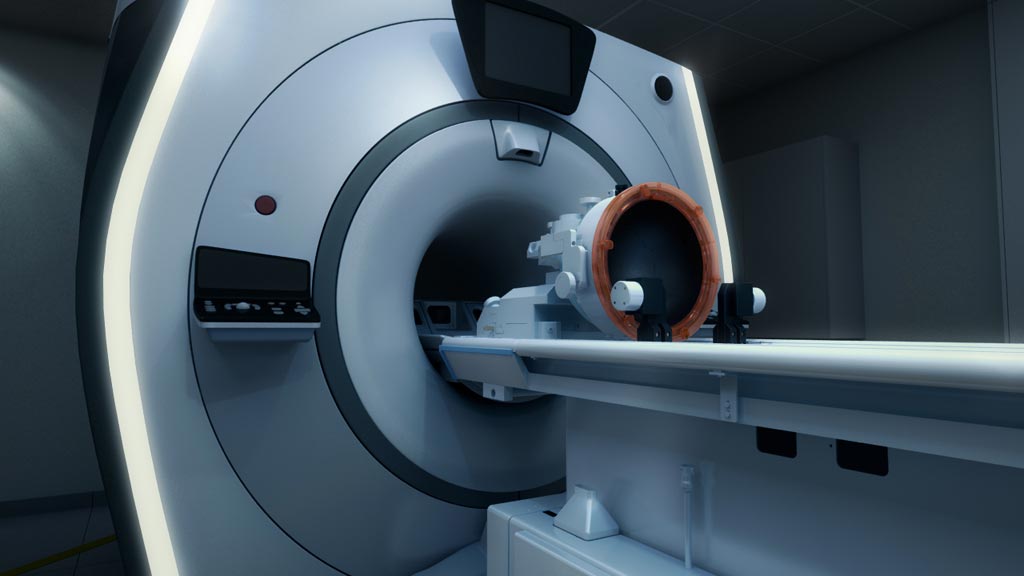Focused Ultrasound May Open Blood-Brain Barrier
By MedImaging International staff writers
Posted on 09 Aug 2018
A new study suggests that focused ultrasound, combined with injected microbubbles, can transiently open the blood-brain barrier (BBB) with a high degree of spatial and temporal specificity.Posted on 09 Aug 2018
Researchers at Sunnybrook Health Sciences Centre (Toronto, Canada), the University of Toronto (Canada), and other institutions conducted a phase I safety trial in five patients with early to moderate Alzheimer’s disease (AD) in order to explore if the permeability of the BBB could be modified using targeted magnetic resonance-guided focused ultrasound (MRgFUS). To do so, the researchers first confirmed β-amyloid levels at the target site using [18F]-florbetaben positron emission tomography (PET).

Image: The Exablate Neuro MRgFUS therapy system (Photo courtesy of InSightec).
For the study the researchers used the InSightec (Dallas, TX, USA) ExAblate Neuro device, which delivers precise high-intensity focused ultrasound (HIFU) using a transducer consisting of 1,024 beams that generate 85○C heat at a focal point to ablate targeted tissue. The associated MRgFUS system provides high-resolution visualization, patient-specific treatment planning, and continuous monitoring of the procedure. After completion of the sonication protocol, a gadolinium-enhanced T1 sequence was performed to verify definitive evidence of BBB opening.
The results revealed that in all patients, the BBB was safely, reversibly, and repeatedly opened, and did not result in serious clinical or radiographic adverse events. Nor were there any clinically significant worsening of cognitive scores at three months, compared to baseline. Exploratory analysis suggested no group-wise changes in β-amyloid deposits post-sonication. The researchers suggested that focused ultrasound could thus serve as a potential treatment for patients with AD. The study was published on July 25, 2018, in Nature Communications.
“Our trial investigates, for the first time, the use of focused ultrasound to open the BBB in patients with early-to-moderate AD, to determine both its safety and technical feasibility,” said lead author Nir Lipsman, MD, of Sunnybrook Health Sciences Centre. “Results from our study will help us plan future clinical trials to establish what role focused ultrasound may play, whether alone or in conjunction with medical treatments, in the management of Alzheimer’s.”
The BBB is comprised of specialized endothelial cells that form the capillary microvasculature of the central nervous system (CNS), and is essential for brain function. It selectively prevents substances from entering the brain blood circulation, allowing only essential molecules such as amino acids, oxygen, glucose and water to pass through. On the other hand, it also poses the greatest impediment in the treatment of many central nervous system diseases, since it commonly blocks entry of therapeutic compounds.














